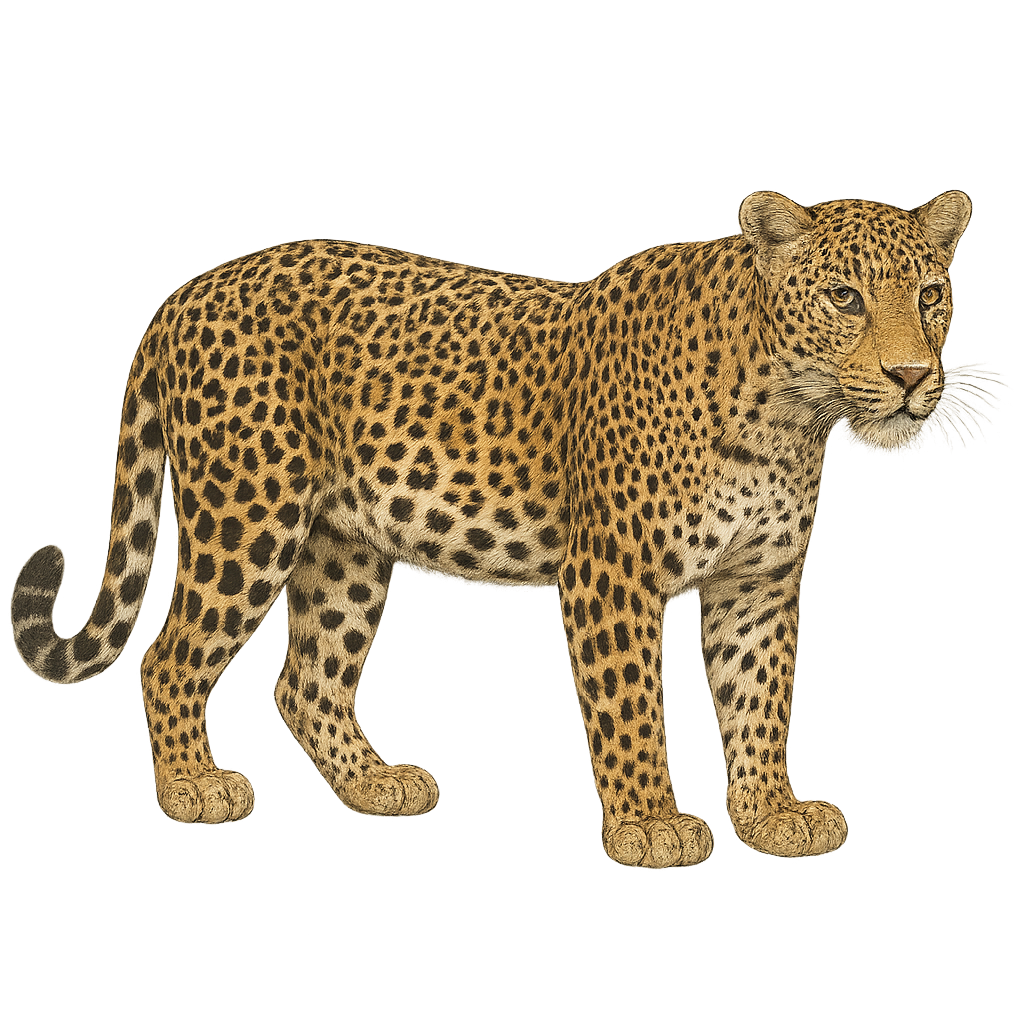Your wildlife photography guide.
Explore the sri lankan leopard in detail, study its behavior, prepare your shots.
Where to observe and photograph the sri lankan leopard in the wild
Learn where and when to spot the sri lankan leopard in the wild, how to identify the species based on distinctive features, and what natural environments it inhabits. The WildlifePhotographer app offers tailored photography tips that reflect the sri lankan leopard’s behavior, helping you capture better wildlife images. Explore the full species profile for key information including description, habitat, active periods, and approach techniques.
Sri Lankan Leopard
Scientific name: Panthera pardus kotiya

IUCN Status: Endangered
Family: FÉLIDÉS
Group: Mammals
Sensitivity to human approach: Shy
Minimum approach distance: 20 m
Rut period: December to February
Gestation: 96-105 jours
Births: March to June
Habitat:
Tropical forests, dry shrublands
Activity period :
Mainly active at night, generally discreet during the day.
Identification and description:
The Sri Lankan Leopard, Panthera pardus kotiya, is a leopard subspecies endemic to Sri Lanka. It is distinguished by its spotted coat, ranging from golden yellow to brown, with distinct black rosettes. This feline is the island's largest predator and plays a crucial role in the ecosystem by regulating prey populations. It inhabits various environments, from tropical rainforests to dry shrublands. Unfortunately, it is threatened by habitat loss, poaching, and human-wildlife conflict. Conservation efforts are vital to ensure its survival.
Recommended lens:
400 mm – adjust based on distance, desired framing (portrait or habitat), and approach conditions.
Photography tips:
To photograph the Sri Lankan Leopard, it is advisable to use a telephoto lens of at least 400mm to capture detailed images from a distance. Patience is key, as these felines are often elusive and primarily active at night. Opt for twilight hours to benefit from soft, natural light. Be attentive to subtle movements in the underbrush and use a tripod to stabilize your camera, especially in low-light conditions.
The WildlifePhotographer App is coming soon!
Be the first to explore the best nature spots, track rutting seasons, log your observations, and observe more wildlife.
Already 1 439 wildlife lovers subscribed worldwide

